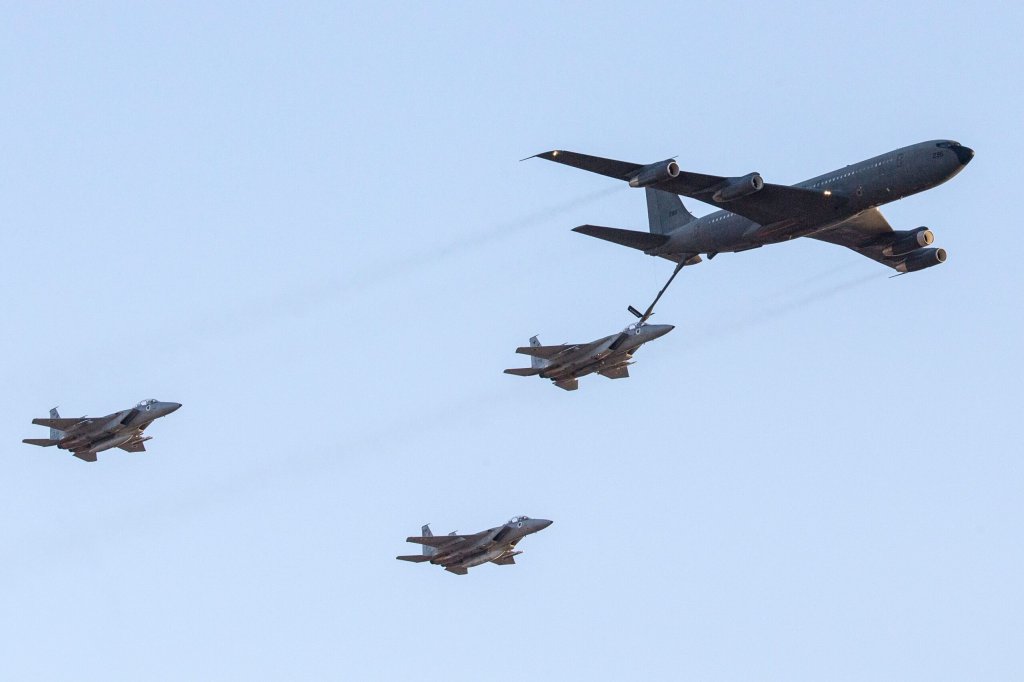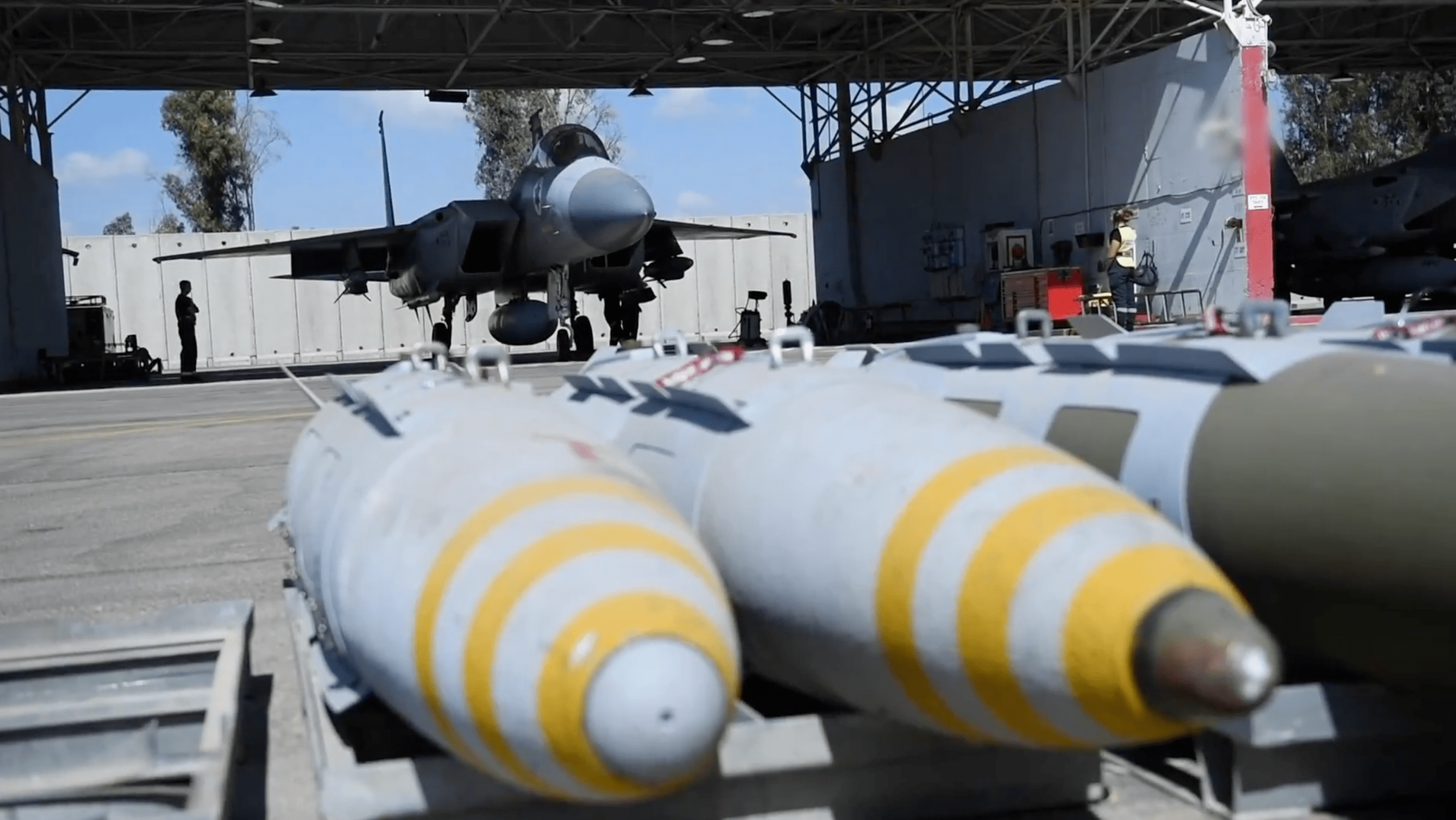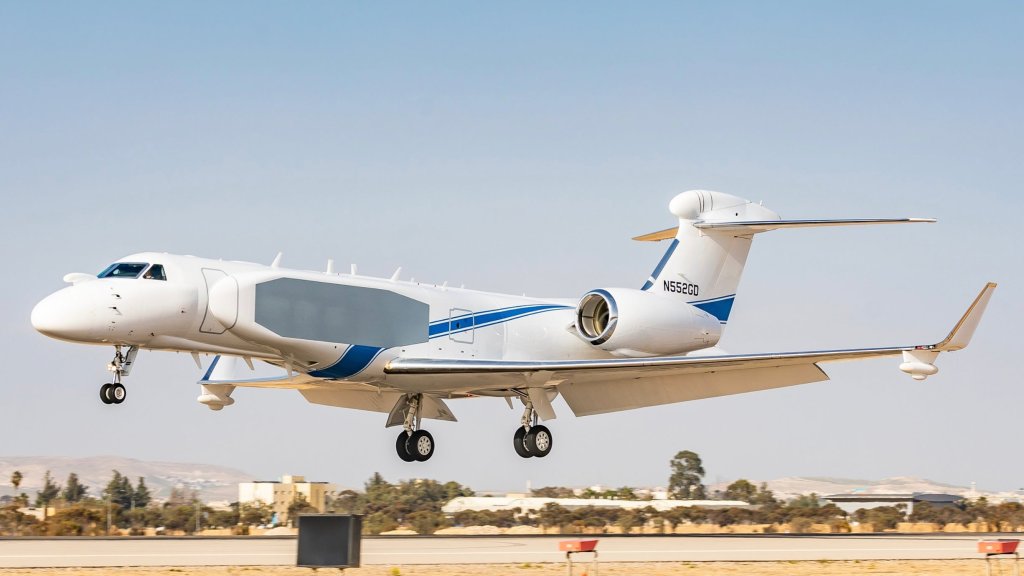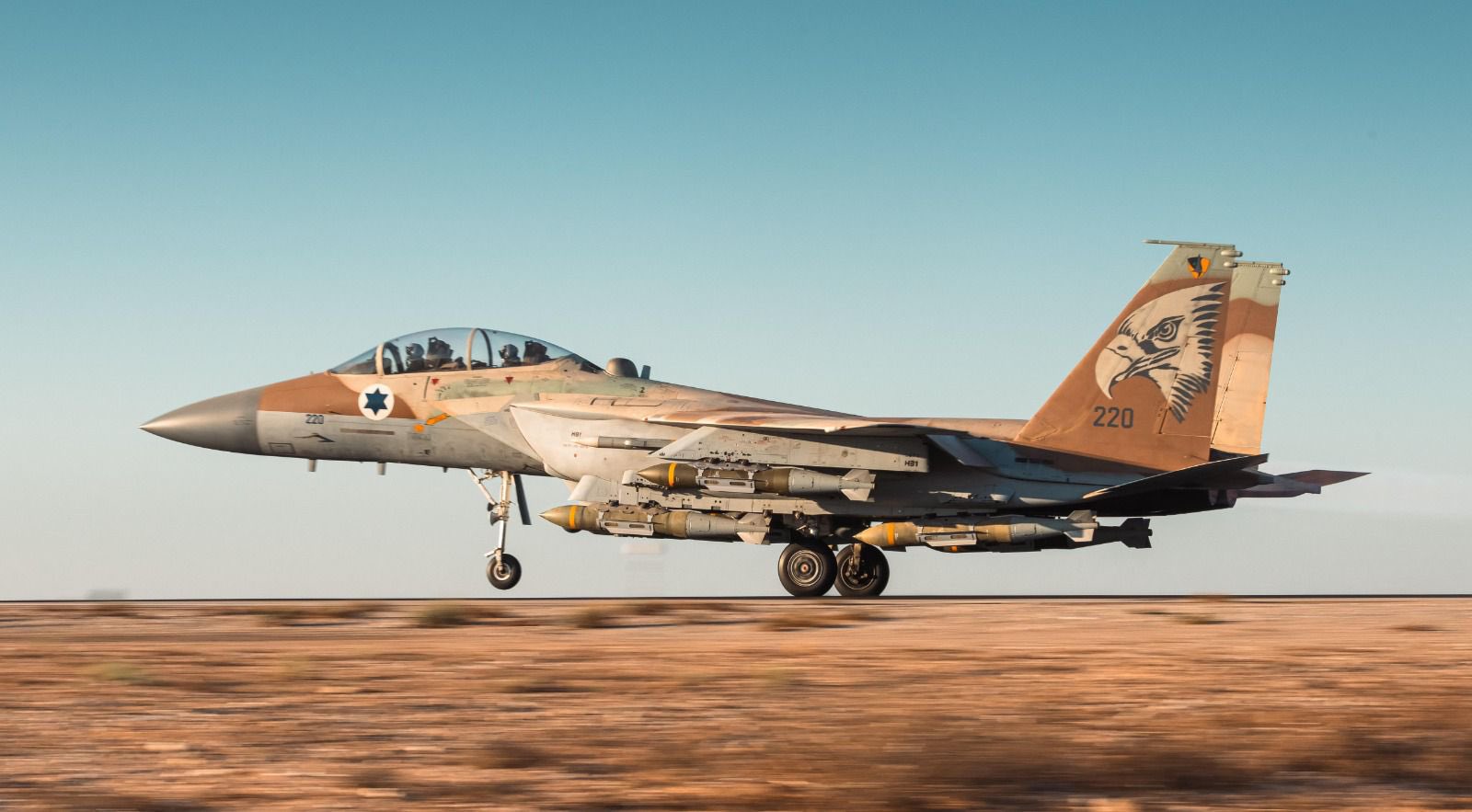The Israel Defense Forces (IDF) have released a video showing portions of the long-range strike mission flown against Houthi targets in Yemen yesterday. The footage confirms that F-35I Adir stealth jets as well as F-15C/D fighters were involved in the attacks, part of an intensified campaign that Israel is now waging against the Iran-backed Houthis, as well as Hezbollah in Lebanon, and Hamas in Gaza. Intriguingly, the video also provides what is very likely our best (if not only) view so far of the little-known remote vision system used in the Israeli Air Force’s Boeing 707 tanker, seen while topping up F-35s over the Red Sea.
The video published today by the IDF shows aerial refueling operations as part of the strike against infrastructure in Yemen used by the Iran-backed Houthi militants. The footage starts with the takeoff of an IAF 707 tanker including views from the flight deck, after which the refueling jet flies in formation with F-35s. A portion of the Saudi Arabian coastline, including the city of Al Humidah can also be seen, from the perspective of the tanker. As for the F-35s, these appear to be carrying exclusively internal ordnance and they are not fitted with radar-reflective Luneburg lenses which remove the stealth jet’s radar-evading qualities.
Of particular interest, however, is the remote vision system in the 707, used by the boom operator to see what is happening at the rear of the aircraft while connecting the boom with the receiving aircraft.
We got a previous view of the screen of the remote vision system back in July of this year when the 707 supported F-35s in another long-range IAF raid on Yemen. But on that occasion, it was just video from the camera feed itself, not of the actual boomer interface that controls the system.
Essentially, the equipment used on the Israeli 707 is a much earlier conceptualization of the technology now used on the U.S. Air Force’s KC-46 Pegasus. In this more recent application, however, the complex Remote Vision System (RVS) has proven to be a particular source of problems.
In both the Israeli 707 and the KC-46, the boom operator performs their tasks from the main cabin via an array of cameras at the back of the plane that feeds into the RVS. In both cases, a hybrid 2D/3D system is used, requiring the operators to wear special glasses.


Perhaps the most surprising facet of this is that Israel developed and fielded a remote vision system that seems to function without any lingering difficulties, and did so many years ago, while the U.S. version used in the KC-46 is still mired in delays. We still don’t know exactly how bad the teething of this older Israeli system was when it was introduced many years ago. Another modern remote vision system has meanwhile also been developed and introduced by Airbus, on the A330 Multi-Role Tanker Transport (MRTT).

As well as aerial refueling, the 707 used in the Yemen raid will likely also have served as a command and control station and communications node. The aircraft is equipped with a satellite communications suite ensuring critical, secure beyond-line-of-sight comms with appropriately equipped tactical aircraft like the F-15 and F-16 and command centers far away. This is especially important in long-range strike operations, with the 707 helping enable real-time remote command and control and enhanced situational awareness, intelligence sharing, and other functions. In this way, targeting information, for example, can be shared between all the aircraft on the active network and can be exchanged with command centers and other aircraft across considerable distances.

Some IAF 707 tankers also execute other missions, including networking and command and control functions. Tomás Del Coro — wikicommons
The current IAF 707 fleet started to enter service in 1979, with then-newer 707-300 airframes replacing previous 707-100s. Known by the Hebrew name Re’em, meaning oryx, the aircraft were acquired from commercial airlines and then began to be adapted locally for aerial refueling. The conversion was done by Israel Aerospace Industries (IAI) and was a long process, only finally being completed in the 2010s.
Details about the current remote vision system are hard to come by and technical details have been relatively closely guarded. Reportedly, as well as the 3D glasses, the system incorporates a foot-operated communications system, meaning the boomer’s hands are kept free to operate the console. Otherwise, based on what we can see in the video, the boomer’s screen is surrounded by very dated-looking analog instruments, reflecting the overall age of the interface installation.
Israel’s 707 tankers, thought to number roughly just seven airframes or so, are absolutely prized possessions for the IAF. They enable long-range strike capabilities that have allowed Israel to reach out over long distances to prosecute high-priority targets since the 1980s. They would be absolutely critical players in even a limited air operation against Iran, not just providing fuel, but also aforementioned networking and command and control capabilities.
Ultimately, the IAF will replace its geriatric 707 fleet with KC-46s, with a deal for eight of the new tankers having been approved. We don’t yet know when Israel will receive its first KC-46s, but by the time they arrive, they should have a fully functional RVS, with the 2.0 version of the system expected to be delivered starting in April 2026.

Other interesting details of the latest raid on Yemen have been provided in other videos and photos from the IDF.
Yesterday, another video released by the IDF revealed details of preparations by an IAF strike package consisting of F-15C/Ds, known locally as Baz, which were seen taking off from their base at Tel Nof, in central Israel, purportedly headed for Yemen. These venerable fighters, which have a dual air defense and strike role, were seen fitted with conformal fuel tanks and loaded with 2,204-pound SPICE 1000 precision-guided glide-bombs, as well as AIM-7 Sparrow and AIM-120 AMRAAM air-to-air missiles, and Elta 8222 self-escort electronic warfare pods. Also in the video are 2,000-pound Joint Direct Attack Munitions (JDAM), although these are not seen fitted on the jets.

While the AIM-7 is an increasingly anachronistic weapon, TWZ has previously explored the continued use of this missile to arm IAF F-15s, noting that the older Sparrow has a warhead that is double the size of the one used in the AMRAAM. However, the AMRAAM still possesses far superior range, is far more flexible overall, better allows for fighters to engage multiple targets at once, and has a true fire-and-forget capability, making it sensible to carry examples of both. On the other hand, the threat posed by Houthi fighters is strictly limited, with little chance that they would risk taking on the IAF, provided they had the opportunity to do so. In certain scenarios, the Sparrow is likely also more suitable for engaging hostile drones — not least due to the fact that it’s a cheaper option and stocks may be close to becoming time-expired.

Intriguingly, one of the aircraft shown taking part in the Yemen strikes is the two-seat F-15D serial 957, which was infamously involved in a mid-air collision with an A-4 Skyhawk in May 1983. Despite losing almost all its starboard wing, the fighter landed safely, was repaired, and has been in frontline IAF service ever since.
The fact that the aging F-15C/D still plays a key role within the IAF is something we have explored in the past and it has also helped influence continued interest in procuring new versions of the F-15, alongside the fifth-generation F-35. Meanwhile, these heavily modified F-15s are central to the air arm’s ability to conduct long-range operations as well as homeland defense and they have been used as multirole air-to-air and air-to-ground platforms for decades.
According to the IDF, “dozens” of aircraft were involved in the Yemen airstrikes on Sunday, which the Israeli military says are its longest-range combat mission since the 1985 raid on the Palestine Liberation Organization (PLO) headquarters in Tunis — a mission that also involved F-15s. According to the IAF, its aircraft flew upward of 1,120 miles to attack the Houthi targets yesterday.
As well as one or more 707 tankers, these “dozens” of IAF aircraft would have included the strike and escort packages of F-35s and F-15s and a variety of intelligence-gathering assets, almost certainly including some of the airborne early warning and control and signals intelligence platforms based on the Gulfstream bizjet airframe. The latest of these is the Nachshon Oron, a multi-mission intelligence-gathering aircraft that you can read more about here.

When the Nachshon Oron was inducted into IAF service in 2021, Yoav Turgeman, vice president of Israel Aerospace Industries (IAI), which developed the aircraft’s mission systems, said that it “will improve the ability of the [Israel Defense Forces] on a number of fighting fronts, principally in the air force’s abilities to conduct strikes.”
The focus of yesterday’s attacks appears to have been the ports of Hodeidah and Ras Issa, with targets including the docks as well as fuel facilities and powerplants. Israeli authorities say that the ports are being used to “transfer Iranian weapons to the region, and supplies for military needs, and thus also oil.”
Reports from the Houthi media claim the strikes killed four people — a port official and three engineers — and injured 33. Residents described power cuts across most of Hodeidah.
IDF Chief of Staff Lt. Gen. Herzi Halevi released a statement after the strike: “We know how to reach very far, we know how to reach even farther, and we know how to strike there with precision.”
“This is not a message; it is an action. An action that carries a message with it,” Halevi added.
In an unusual move, the IDF flew a CNN journalist, Nic Robertson, aboard the 707 during yesterday’s mission. During the flight, an IDF spokesperson said that the strikes were in response to the Houthis firing three long-range missiles against Israel in the past two weeks; all of those missiles were intercepted near Tel Aviv, the spokesperson said.
According to the Houthis, the most recent of these attacks, on Saturday, targeted Israeli Prime Minister Benjamin Netanyahu Ben Gurion International Airport, outside Tel Aviv, as he arrived back from a visit to the United States.

It was while in the United States that Netanyahu had approved the airstrikes on Beirut last Friday, which killed Hassan Nasrallah the veteran leader of Hezbollah. You can read our coverage of those attacks here.
The United States has meanwhile confirmed suspicions that versions of the 2,000-pound GBU-31 JDAM were used to strike Beirut. Senator Mark Kelly, the Chairman of the Senate Armed Services Subcommittee on Air-Land said that U.S.-made “Mark 84” bombs equipped with JDAM kits.
“We see more use of guided munitions, JDAMs, and we continue to provide those weapons,” Kelly said on NBC. “That 2,000-pound bomb that was used, that’ s a Mark 84 series bomb, to take out Nasrallah.”
The bombs used were BLU-109s, which is a penetrating bunker-buster warhead, or variant of them, also with a nominal weight of 2,000 pounds. In the wake of the raids that killed Nasrallah, the IAF released videos and photos showing at least eight F-15I strike fighters carrying 2,000-pound-class penetrator JDAMs. At least some of those aircraft carried seven of the JDAMs each.

Since then, there have been more Israeli airstrikes on Lebanon, while Hezbollah launched several attacks of its own yesterday. The group said that one of those targeted a group of Israeli soldiers, while others reportedly struck areas in northern Israel, according to officials there.
Despite the death of Nasrallah and the vast majority of its upper echelons in recent Israeli attacks, Hezbollah says it will continue to fight Israel.
Since the start of the Gaza war, almost a year ago, there have been concerns that fighting between Israel and Hezbollah could draw in Iran, and other Iran-backed proxies, sparking a larger regional conflict.
It seems that yesterday’s long-range strike mission against the Iran-backed Houthis in Yemen was not only intended to degrade the militants’ ability to attack Israel but was also a very clear warning to Iran not to become more deeply involved.
Whatever happens next, the operations so far have revealed some fascinating and surprising aspects of Israeli capabilities, from exploding pagers on the one hand to our best look at the remote vision system on Israel’s veteran 707 tankers on the other.
Contact the author: thomas@thewarzone.com
